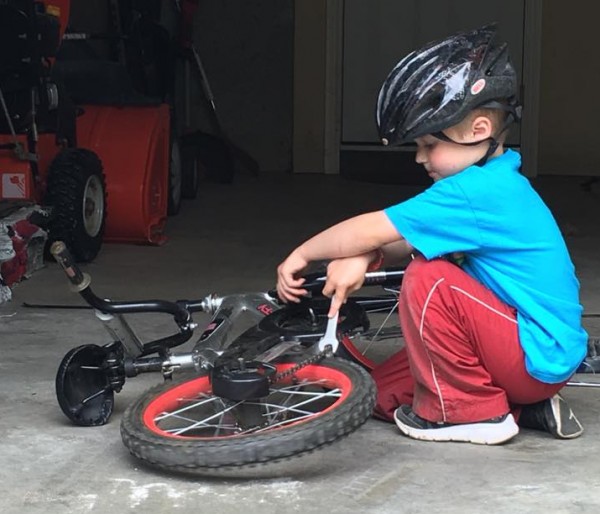What four-year-old wouldn’t want a dog? Liam Thomas is hoping to get one. A dog he can run and play and cuddle up with. A dog he can trust. With his life.
You see, Liam has type 1 diabetes.
Challenges of type 1 diabetes
When you have type 1 diabetes, it means your pancreas no longer makes insulin.For some unknown reason, the body’s immune system attacks the cells in the pancreas that produce insulin. Insulin is the energy source for all of our cells. It’s important. For a short time before he was diagnosed, Liam was showing some classic signs. He was drinking more than usual and had started wetting the bed. He was also cranky and one day at preschool he was glassy-eyed. In the emergency room that day, his glucose measured 544. Two hundred or above is cause for concern.
With type 1 diabetes, lifestyle changes, a different diet, or more exercise will not make things start working again. Instead, you need to replace the missing insulin. Liam wears a pump, which his parents must continually program and reprogram to deliver the right amount of insulin at the right time.
Despite everyone’s best efforts, Liam’s blood sugar levels constantly rise and fall. Either way, it could be a deadly situation. If they dip too low, he could go into what’s called insulin shock and have a seizure, lose consciousness, die. If they rise too high, it could lead to ketoacidosis or diabetic coma.
“It’s so complicated,” says Ashley. “So many things can change his blood sugars. Activities, sleep, what he eats or doesn’t eat, a growth spurt, something that upsets him, a cold. Some days it doesn’t make sense. We don’t expect him to stabilize until he’s an adult.”
Constant monitoring
Liam wears a continuous glucose monitor that checks his blood sugars every five minutes, day and night. If they get above or below a certain level, an alarm goes off. “It’s a great tool,” says Liam’s mother Ashley, “but it’s 15 minutes behind real time.”
A lot can happen in 15 minutes. That’s why the family wants to get Liam a dog. Not just any dog, but a diabetic alert dog. These dogs are trained to sniff out scents in the saliva that can indicate high and low blood sugar levels. The dog alerts the person with his paw or by ringing a bell. They will still have to rely on technology, but the dog will add an extra measure of security. Ashley says they looked into the possibility soon after Liam was diagnosed, just a year ago. The cost was overwhelming — $20,000. Even more overwhelming was coming to grips with Liam’s diagnosis, so they put the idea on hold.
Next year, Liam will be in school, which will present a host of new challenges. “How will we let him be a normal child?” Ashley asks. “Go on field trips with a lot of walking, do recreational activities, ride the bus. What if someone brings in cupcakes? It’s all very scary, but we try hard to put our child first and his disease second.”
As for Liam, he seems to be taking things in stride. He can even check his own blood sugar during the day. Take a look at this short video.
“He’s such a wonderful kid,” says Ashley. “It blows my mind how unfazed he is about a gigantic adult problem. He’s so young, he doesn’t know any difference.”
But Liam does know there’s a dog in his future. His parents decided to start looking again and found Heads Up Hounds in Omaha, Nebraska. Their dogs are only $8500 (including tax). Why the price difference? For one thing, instead of training purebreds, the owners comb shelters for rescue dogs they believe would make good diabetic alert dogs. The ones they choose are between one and two years old and in general, are confident, people-oriented, well balanced, and motivated by treats. Other qualities may depend on the needs of the person with diabetes.
Sometime in the next year, Liam will be matched with a dog that will undergo extensive training for about three months. They’re currently on a waiting list. To raise the money they’ll need, the family started a GoFundMe campaign. Their goal is $10,000. The extra is to pay for transportation to and from Omaha to pick up Liam’s dog and to stay for a three-day orientation.
The way Liam’s parents look at getting him the diabetic alert dog is that two lives could be saved. The dog is a rescue dog and someday, that dog might rescue Liam. If you want to help, visit the family’s GoFundMe page, which is called Bring Liam’s Alert Dog Home



Leave A Comment